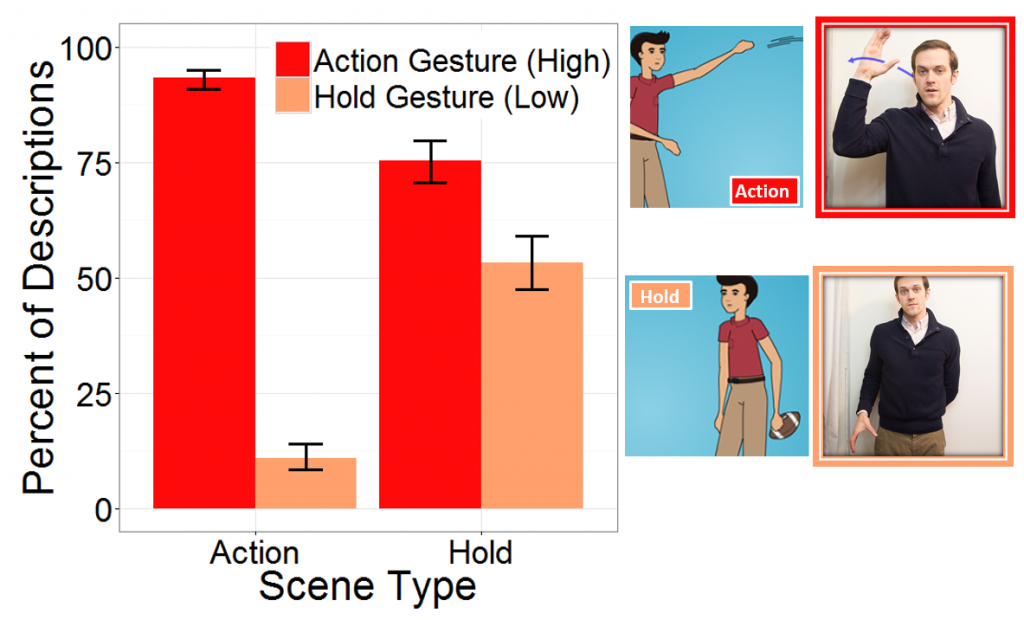Mark Koranda and Maryellen MacDonald recently presented a poster at this year’s CUNY Conference on Human Sentence Processing. To learn more about their work, read the full abstract or view the poster.
Short abstract. Investigations in the origin of word order preferences using a ‘silent gesture’ paradigm assume gesture descriptions contain separable language-like constituents such as subject, object, and verb. However, maximally iconic gestures simultaneously depict multiple constituents of an event with, e.g., arm motion (verb), handshape (object), and body (subject). Participants described events whose actions were easy or difficult to depict with a maximally iconic gesture (easy versus difficult scenes). Descriptions for both contained far more multiple-constituent gestures than single, showing no evidence for a clear constituent order. Difficult scenes elicited more (maximally iconic) gestures depicting non-present actions than actions in the scene (below).
